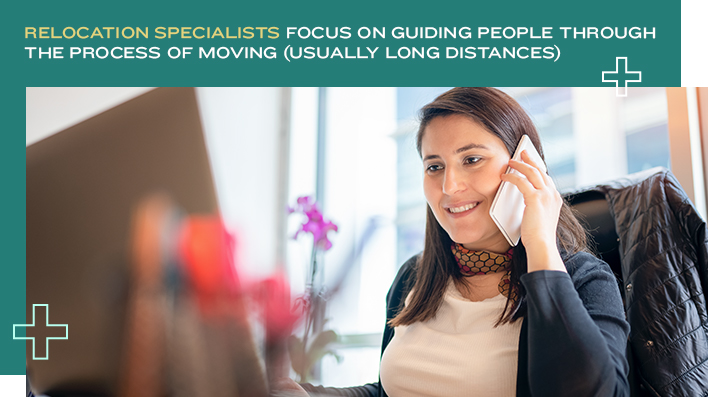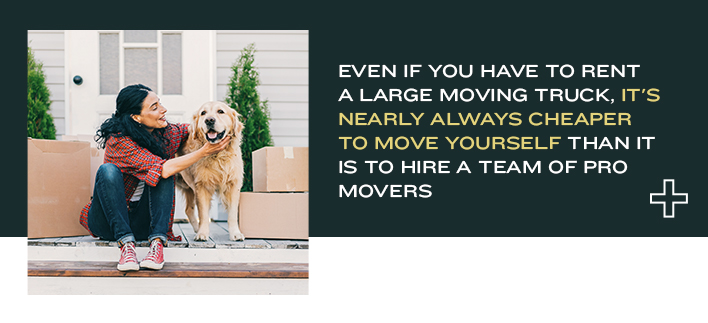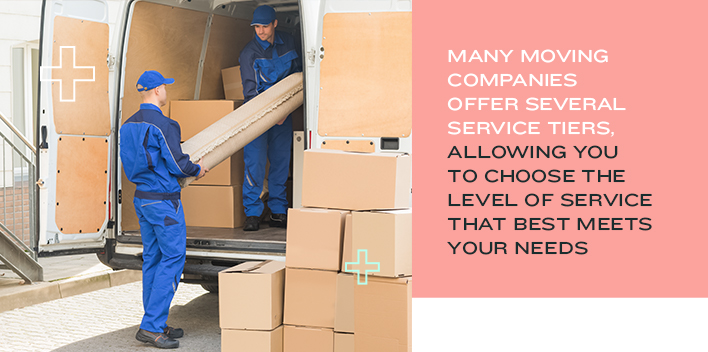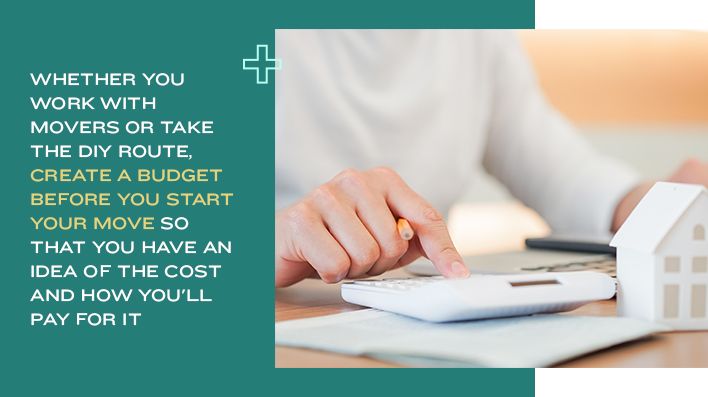Moving to a new place can be an exciting opportunity to start over. You may be relocating for your dream job, an academic program, or because you’ve recently gotten married. Regardless of your reasons, there are a few things you can do to keep the costs down and make the process easier.
Here’s how to master the art of moving on a budget, from buying your home in a different state to making sure all costs are accounted for.
How to Buy a Home in Another State
Depending on where and why you’re moving, you might need to purchase a house in a different state. And, depending on which state you’re relocating to, you might have few opportunities to visit before the day of your move.
Buying a home in a different state is a slightly different experience compared to buying in your current city or within state lines. Doing ample research and finding the right people to help you will ensure you buy a home that meets your needs and works with your budget.

Research the Area
The more research you do before you buy a house in a new state, the better. Even if you can’t get to the area to visit it and scope things out, you can learn a lot about it from the comfort of your current home.
Many resources are available to help you get to know a new area. Some give you a broader view of the state or city, while others will give you a behind-the-scenes look at the region. For example, to get a general sense of a city or town, you can start reading the local newspaper or visiting the websites of local TV news channels.
Social media can give you a better sense of the day-to-day life of the people who call the area home already. You can look for neighborhood groups online or join a community website. You can learn a lot about the quality of municipal services and get an understanding of crime and safety in the region.
Work with the Right Agent
Having a good agent is essential when you’re buying a home in your current area. Having a good agent is even more critical when you’re purchasing a home from a distance. Your real estate agent will be your eyes and ears throughout the home-buying process. If you can’t be there in person to look at homes, they’ll be the ones walking through the house, showing you pictures or video of the space.

You have a few options for finding a reliable real estate agent in a different state. If you’ve purchased a home in the past, you can connect with your previous buyer’s agent to see if they can refer you to anyone in the state or area you’re moving to. You can also check with people you know who live in that area to see if they can recommend an agent to you.
If you don’t have a personal contact who can refer you to an agent, you can dig a bit deeper to find someone who’s a good fit for you. Look online for real estate agents who work and have expertise in the city or town you want to move to. Then, do some digging and check out reviews of them. If you’ve already joined a neighborhood website or social media group, you can post on it to see if anyone can recommend a buyer’s agent.
Another thing to consider when searching for someone to help you buy a home is the possibility of connecting with a relocation specialist. If your company is asking you to move or if you’re relocating for a new job, there might be a relocation specialist on staff in the HR department. You may also want to ask your employer or prospective employer about whether or not a monetary relocation assistance package is available.
Relocation specialists focus on guiding people through the process of moving (usually long distances). They can put you in touch with reputable real estate agents in your new area, and they can also help you sell your current home. Relocation specialists will also help you manage the nuts and bolts of the moving process, such as arranging for movers and getting your new home set up. Although some are company-specific, it’s also possible to find a relocation specialist who works independently. In some cases, it’s possible to find a buyer’s agent who’s also a relocation specialist.

Try to See the Home in Person
Scheduling a home inspection, and making the sale of the home contingent on that inspection, is always a good idea. This is especially true when you’re buying from out of state and might not have been able to see the house in person before making an offer. It’s also a good idea to try and see the home with your own eyes, at least once, before the sale is final.

The home inspection can be an ideal time to visit the house, especially if you have limited time or funds for travel. During the inspection, a certified home inspector will conduct a visual investigation of the house. They’ll point out areas that could be a cause for concern, such as electrical issues or structural problems. They’ll test the appliances in the house to make sure everything is working. They’ll also give you an idea of the age of the systems of the home, such as the HVAC system or water heater. Older systems and appliances might be working fine now, but could need replacement soon after your purchase, adding to the overall cost of the home.
Being present for the home inspection allows you to get a good grasp on what’s going on with the house and helps you better understand the severity of particular issues. If this is your first time buying a home, the home inspector can be a valuable resource, giving you advice on general home maintenance and upkeep.
Ask a Lot of Questions
There’s no such thing as a stupid question when buying a home, especially if you’re making the purchase across state lines. If any part of the process is unclear, or if you don’t understand what your real estate agent or home inspector has said, ask for clarification.
The more questions you ask, the more knowledgeable you’ll be when it comes to your prospective home.

Should You DIY Your Move or Work With Professional Movers?
Once you’ve found a house, put in an offer, go through the inspection process, and are about to close, it’s time to start thinking about the move itself.
Among the first things you should consider when planning your move is whether to work with a team of professional movers or do everything yourself. Each option has benefits and drawbacks to consider.
Pros of a DIY Move
Perhaps the biggest benefit of handling your own move is the lower cost. Even if you have to rent a large moving truck, it’s nearly always cheaper to move yourself than it is to hire a team of pro movers.

Another advantage of a DIY move is that you’ll be in full control of the process from start to finish. You won’t have to worry about movers mishandling your belongings or accidentally breaking objects in transit. You also won’t have to move according to the mover’s schedule. You can decide when to start packing, when to load the truck, and when to get on the road to your destination. You can also determine when to make stops along the way.
It can be easier to handle the move on your own if you have a short timeline, too. Although some people have months to plan a move, others might find that they need to relocate quickly, with just a week or even a few days of lead time. If that’s the case for you, it can be much easier to pack up and find a truck on your own than it would be to find a moving company that’s available on short notice.
Cons of a DIY Move
A potential disadvantage of a DIY move is that you’re responsible for arranging every aspect of the move. You’ll need to get moving supplies, pack up your belongings, find a truck or van to rent, and get people to help you carry your belongings from your current home to the van and from the van to your new home.
Moving can be stressful and physically exhausting, and there’s a risk of injury, especially if you aren’t used to picking up heavy items like bulky furniture. Another potential drawback of moving on your own is that you may have difficulty getting your belongings into your new home.
A large piece of furniture, such as a couch, might not fit through the doorway or up the stairs. Professional movers would likely have the equipment needed to hoist large items into homes, avoiding the stairs entirely, or to take the doors or windows off to make an opening larger.
Pros of Professional Movers
There are definitely benefits to hiring professional movers. Many moving companies offer several service tiers, allowing you to choose the level of service that best meets your needs. For example, if you prefer to pack your belongings yourself, you can hire the company to load your possessions into the truck, transport them to the new home, then unload them there. If you’d prefer a more hands-off move, you can hire a moving company to pack up your belongings for you.

Working with professional movers can be safer than a DIY move. Since you aren’t doing any heavy lifting, there is less of a chance of you hurting your back or otherwise getting injured during the move. A reputable moving company should also have plenty of insurance to cover any damage to your belongings that might occur during the move.
Cons of Professional Movers
The biggest drawback of working with professional movers is the cost. Although the exact cost of a move varies based on its size, the distance, and the duration, you can expect to pay anywhere from a few hundred dollars for a short, in-town move to several thousand dollars for a multi-day, interstate move.
If you’re considering working with professional movers, it’s worthwhile to shop around and get estimates from several companies before you make your decision. Find out how much the move is likely to cost based on the duration and the company’s hourly rate. Compare the quotes and choose the one that works with your budget. Keep in mind that the cheapest rate might not be the best option. Look at what the company is offering and consider their reputation when you make your choice.
Another drawback of working with a professional moving company is that you lose some flexibility. If you move yourself and you end up getting a bit behind, you can always push back the time or day of your departure. A moving company is likely to be working on a tighter timeline, leaving little wiggle room for delays.
How to Plan Your Moving Budget
Whether you work with movers or take the DIY route, create a budget before you start your move so that you have an idea of the cost and how you’ll pay for it. Knowing what expenses are common during a move can also help you find ways to lower them or even eliminate them entirely.

Make a List of Anticipated Costs
Although every move is different, there are some costs you can usually count on during the process. As you go about making your moving budget, include the following expenses.
- Moving company costs: If you decide to work with a team of movers, you’ll need to include the amount of their estimate in your budget. Give yourself a bit of a cushion, and add 10% to the estimate, in case it ends up costing more than expected. Also, include a tip in your planned costs, on top of the estimate the company gave you.
- Moving van or truck rental: Should you decide to move on your own, you’ll likely need to rent a van or truck to haul your belongings from one house to the other. For a long-distance move, another option might be to rent a storage pod and have it transported to your new home. Shop around to see what the going rate is for trucks, vans, or pods. Keep in mind that costs vary considerably based on whether you’re moving in-town or across state lines.
- Time off from work: Unless you move over the weekend or are moving for a job you haven’t started yet, you might need to take a day or two off from work. Depending on your company’s paid-time-off policy and how you get paid, that can mean missing wages.
- Hotel stay: If you’re moving long-distance, you might need more than a day on the road to get to your new home. Because of this, you may need to include the cost of lodging in your moving budget. Keep in mind that if you’ve hired movers, you might be responsible for covering their hotel stay, too.
- Food on the road: Similarly, if you’re moving long-distance, you might need to purchase meals and snacks on the way to your destination. You may also have to pay for meals for your moving team, too, whether they’re professionals or friends and family you’ve recruited to help.
- Moving supplies: You’re likely going to need boxes, cushions, bubble wrap, wrapping paper, and tape to pack up your belongings securely and ensure they get to their destination intact. The cost of moving supplies can vary considerably depending on how much you need and where you buy them. You might consider purchasing from a company that offers to buy back unused supplies at the end of your move. To save even more money, consider asking friends or neighbors if they have any sturdy boxes or newspaper they’re looking to part with. If you know you’re moving well in advance, you may also be able to save and repurpose boxes from any online orders that you receive before the move.
- Storage fees: Depending on the amount of lag time between your moving date and the date you can actually take possession of your new home, you might need to store your belongings somewhere, such as a storage pod or unit.
- Gas and tolls: If you’re moving to a new state, you may encounter tolls. You’ll also have to pay for gas, both for your own vehicle and the moving truck or van you rented. Many rental companies expect you to return the vehicle with a full tank of gas.
- Airfare: Should you need to move across the country, it can make sense to fly to your destination, rather than drive there. If that’s the case, you’ll need to buy plane tickets for yourself and others in your household.
After making a list of expenses, add them up to get a ballpark figure for the total cost of your move. Once you have the estimated cost, you can start thinking about how you’ll afford or potentially reduce it.
Consider How You’ll Pay for the Move
How will you pay for your move? You have a few options, depending on your circumstances. If you’re moving for work, your company might offer you relocation reimbursement. If you aren’t moving for a job or if your company doesn’t reimburse moving expenses, you might use existing savings to cover the cost of your move.
If you have a fair amount of lead time between when you decide to move and the moving date, you can make a plan to save up to cover the expenses. Divide your anticipated moving cost by the number of months between now and the moving date to see how much you should set aside each month.
Find Ways to Cut Costs
If you’re looking at your expected moving costs and the amount you’ve saved or will get reimbursed for your move and there’s a notable discrepancy, you have options. Here are some ways to reduce the cost of your move.
- Get moving supplies for free: While you can pay for boxes, you definitely don’t have to. Moving boxes are pretty easy to get for free. You can visit a local store and ask if they have any boxes from shipments they can give you. You can also look at various for-sale websites in your area to see if anyone who recently moved has boxes they’re wanting to give away. Instead of buying bubble wrap, you can use towels and bed linens to wrap up fragile items.
- Turn to friends and family: If there was ever a time to call in a favor from your friends and family, it’s when you’re moving. Instead of hiring professional movers, see if you can recruit a friend or two to help you transport your possessions. You might even have a friend or relative who has a truck, saving you the cost of renting a vehicle.
- Sell or donate items you don’t use: The fewer items you have to move, the less you have to pack and the less time the move will take. While you can safely recycle or throw away certain items, such as old magazines or worn-out clothing, others you can donate or try selling.
- Schedule your move during the off-season: If you can, try to schedule your move for a less busy time of year, such as the late fall or winter. Spring and summer tend to be prime moving seasons, making it more challenging to book movers or rent a vehicle. You might also get a better deal from a moving company or vehicle rental company if you move in the off-season.
- Pay for expenses with a cash rewards card: If you’ll have a lot of moving expenses, paying for them with a cash rewards credit card, like our Founder’s Card that offers 2%* or 1.5 in cash rewards on every purchase, can earn you cash back. Just remember, you have to pay the charges in full each month or the interest you would pay will offset the cash rewards.

PSECU Members Achieve More
Whether you’re buying a new home, planning a long-distance move, or want tips on creating a budget that helps you reach your financial goals, we’re here to help you achieve more.
Visit our WalletWorks page for additional tips on managing your money.

*You can earn 1.5% cash rewards on purchases. You can earn 2% cash rewards on purchases if you maintain a PSECU checking account and qualifying monthly direct deposit(s) of at least $500. Some exclusions may apply. See the Visa® Founder's Card and Visa® Alumni Rewards Card Rewards Program Terms and Conditions for full details.
The content provided in this publication is for informational purposes only. Nothing stated is to be construed as financial or legal advice. Some products not offered by PSECU. PSECU does not endorse any third parties, including, but not limited to, referenced individuals, companies, organizations, products, blogs, or websites. PSECU does not warrant any advice provided by third parties. PSECU does not guarantee the accuracy or completeness of the information provided by third parties. PSECU recommends that you seek the advice of a qualified financial, tax, legal, or other professional if you have questions.
